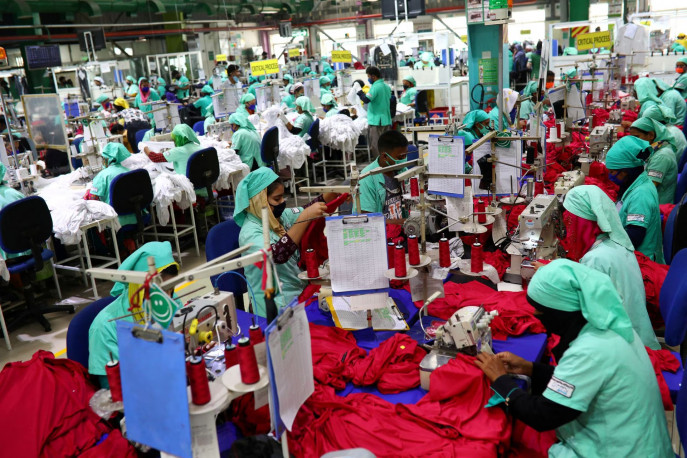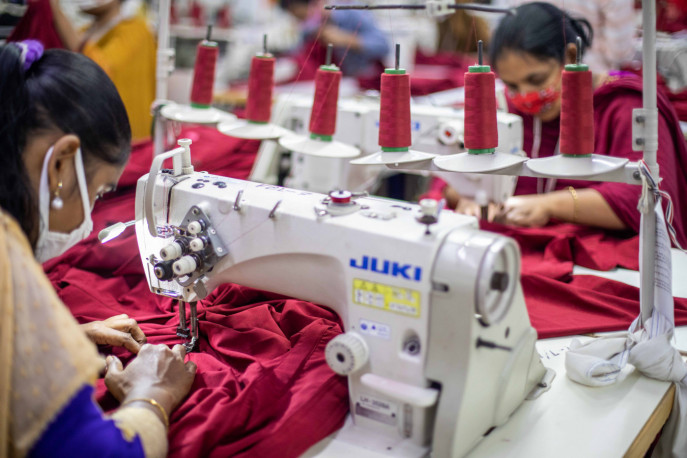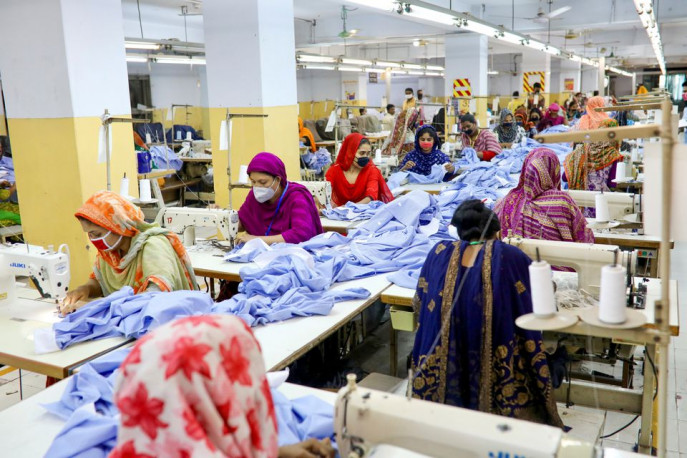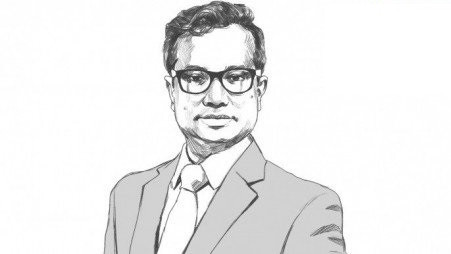The takeaways from the third Dhaka Apparel Summit (held late last year) can be the guiding principles for Bangladesh’s apparel industry to grow and develop this year and beyond
 The apparel industry in Bangladesh, has made commendable progress in safety, sustainability and workers’ well-being in recent years. Photo: Mumit M
The apparel industry in Bangladesh, has made commendable progress in safety, sustainability and workers’ well-being in recent years. Photo: Mumit M
We have started a fresh new year. Last year ended with ‘Made in Bangladesh Week’ – the biggest-ever initiative of Bangladesh apparel industry organised by the Bangladesh Garment Manufacturers and Exporters Association (BGMEA) in partnership with Bangladesh Apparel Exchange (BAE).
Stakeholders from across the world attended the Made in Bangladesh Week held in Dhaka from 13 to 18 November 2022.
Speakers of the third Dhaka Apparel Summit, one of the 17 events of Made in Bangladesh Week, included ambassadors and many notable figures in the national and international apparel industry including but not limited to Óscar García Maceiras, CEO, Inditex; Anne-Laure Descours, Chief Sourcing Officer, PUMA; Ziaur Rahman, Regional Country Manager Production (Bangladesh, Pakistan and Ethiopia), H&M, Dr Ratnakar Adhikari, Executive Director of the Executive Secretariat for the Enhanced Integrated Framework, WTO, Anne Gerard van Leeuwen, Ambassador of the Netherlands to Bangladesh, Dr Ahmad Kaikaus, Principal Secretary to Prime Minister; Faruque Hassan, President, BGMEA; and so many others.
At the summit, the speakers discussed the ways forward for the sustainable development of Bangladesh’s apparel industry. It’s a good idea to reflect on some of their discussions, which can be the guiding principles for Bangladesh’s apparel industry to grow and develop in 2023 and beyond.
All the speakers unanimously agreed that apparel is a time-tested industry in Bangladesh, which has made commendable progress in safety, sustainability and workers’ well-being in recent years. We need to accelerate this momentum of sustainability. To continue this trend, the first and foremost important thing would be to upgrade the business model of Bangladesh’s apparel industry.
With only about 8% global market share, the Bangladesh apparel industry has huge potential ahead of it. Whereas 75% of the global textile and clothing consumption is non-cotton, only 25% of our apparel exports are non-cotton. This means we are not taking full advantage of such a huge opportunity. So, the following story of the industry’s transformation should be around up-gradation, innovation and value addition.  Photo: Mumit M
Photo: Mumit M
Innovation will also be the key to surviving in the ever-competitive global apparel market. Bangladesh still imports 50% of woven textiles to export apparel. Whereas in the fashion industry, 87% of greenhouse gases are generated from fabric manufacturing. The cutting and sewing do not emit carbon at all. So, our future steps towards a greener industry would be moving towards a circular economy from a linear one.
The government policy framework will continue to be one of the crucial factors in the sustainable growth of Bangladesh’s apparel industry. One of the government’s prime focuses should be ensuring uninterrupted electricity and gas supplies to the apparel and textile manufacturers. Since the apparel industry is very much capital incentive, the onus is also on the government to make low-cost finance or low-interest loans available to the manufacturers.
Branding the positive stories of the Bangladesh apparel industry will position ‘Made in Bangladesh’ as a preferred choice for consumers. These days, consumers are more conscious of the impact of the apparel products they purchase. But unfortunately, the commendable practices of the Bangladesh apparel industry are still untold to the global audience. Bangladesh must take advantage of social and digital media to spread its good stories.
As the production processes of our industry are rapidly changing, enhancing the close productivity connection between industry and education is important. Upscaling labour, focusing on training and minimising the gap between the industry and academia are the keys here.
Local infrastructure growth will be very important going forward. Logistics has a vast spectrum, including the speed of your Wi-Fi, how quickly you can book a cargo online, navigating the crazy traffic to get to the port swiftly etc. Much has evolved as we are evolving every day as a nation.
But in infrastructure, Bangladesh is still lagging behind most of its competitors. As BGMEA envisions achieving $100 billion in apparel export by the year 2030, the efficiency of Chattagram Port, the country’s main seaport, needs to be increased manifold.  Photo: Mumit M
Photo: Mumit M
Bangladesh is blessed with riverways. The apparel manufacturers of the country are heavily dependent on the road network when it comes to export and import. While the world is focusing more on river and rail networks as they are more environmentally friendly and cheap as well, we haven’t yet been able to reap the benefits of our rivers.
Intensive diplomatic efforts should be undertaken to get cooperation and support from the importing countries, given Bangladesh’s LDC graduation. Duty-free,quota-free markets and special incentives designed for the LDC countries will be taken away after graduation. To tackle this challenge, Bangladesh can consider going for bilateral trade agreements with potential partner countries while securing GSP plus from the EU should be the centre of our economic diplomacy.
About 71% of the country’s total exports account for traditional markets. On the other hand, our apparel products basket is heavily concentrated in five items – shirts, woven trousers, sweaters, t-shirts and denim. Bangladesh has enormous potential in terms of products and market diversification.
Audit fatigue is something that is also hindering the growth of Bangladesh’s apparel industry. So, unified codes of conduct cannot only save the manufacturers from wasting extra money but also allow the buyers to reduce the lead time.
Last but not least, a collaboration between the buyers and manufacturers can create a win-win situation for both parties. While the manufacturers should not always wait for buyers’ directives but rather be proactive in practising sustainability, the buyers should also come forward to support manufacturers with sustainable prices. Consumers should also agree to pay more for the products produced in a safe and sustainable environment.
 Abdullah Hil Rakib/Director,BGMEA. Illustration: TBS
Abdullah Hil Rakib/Director,BGMEA. Illustration: TBS
Abdullah Hil Rakib is the Managing Director of Team Group. He is also a Director of the Bangladesh Garment Manufacturers and Exporters Association (BGMEA).
Disclaimer: The views and opinions expressed in this article are those of the authors and do not necessarily reflect the opinions and views of The Business Standard.
















